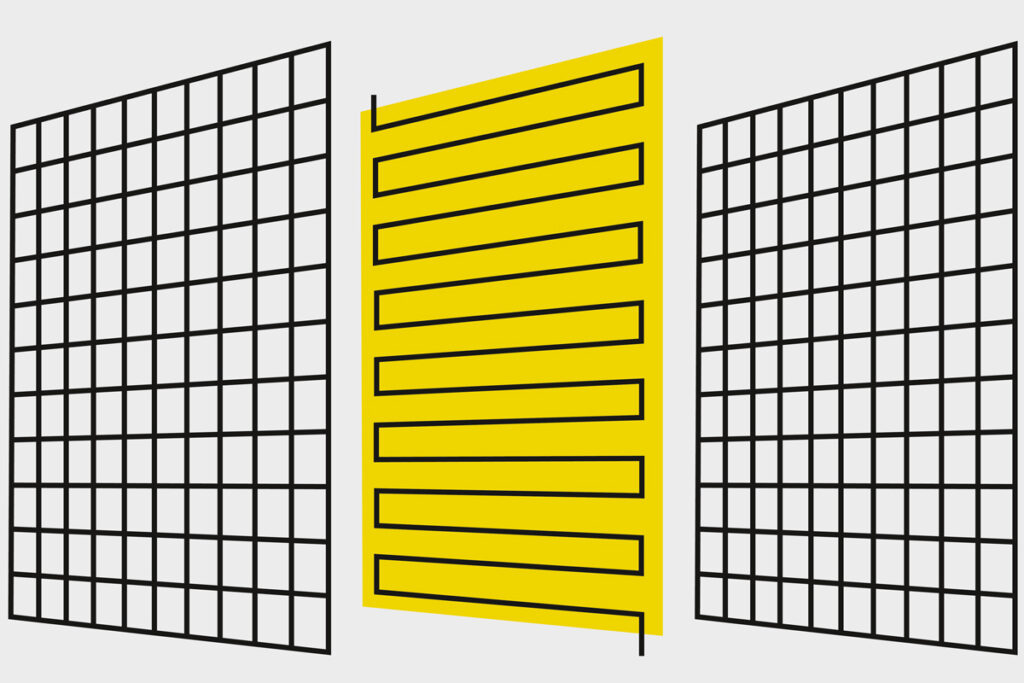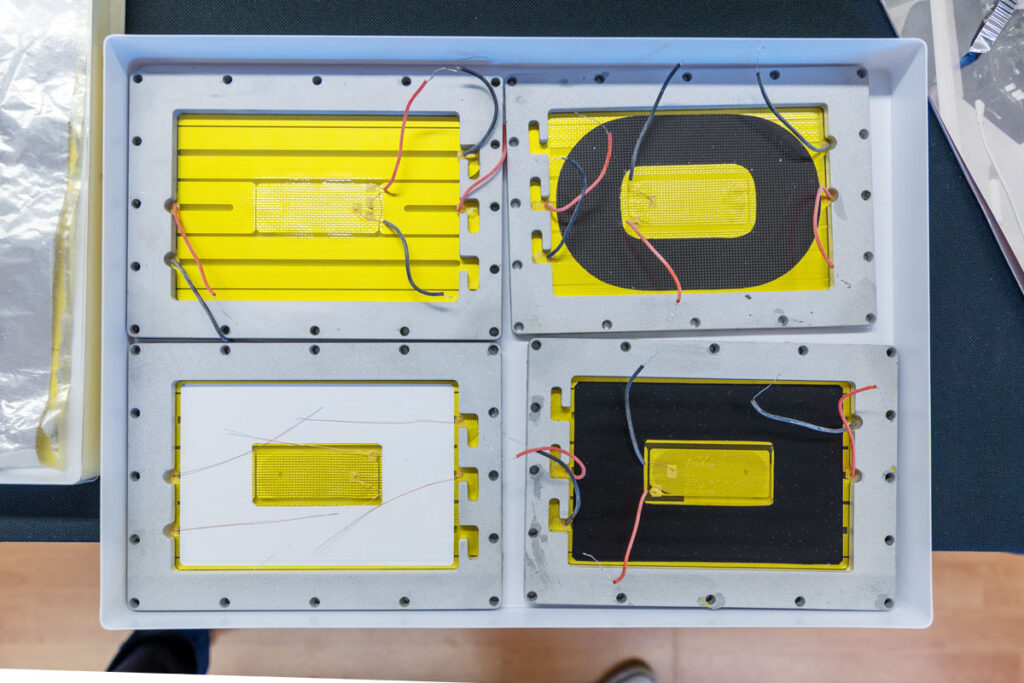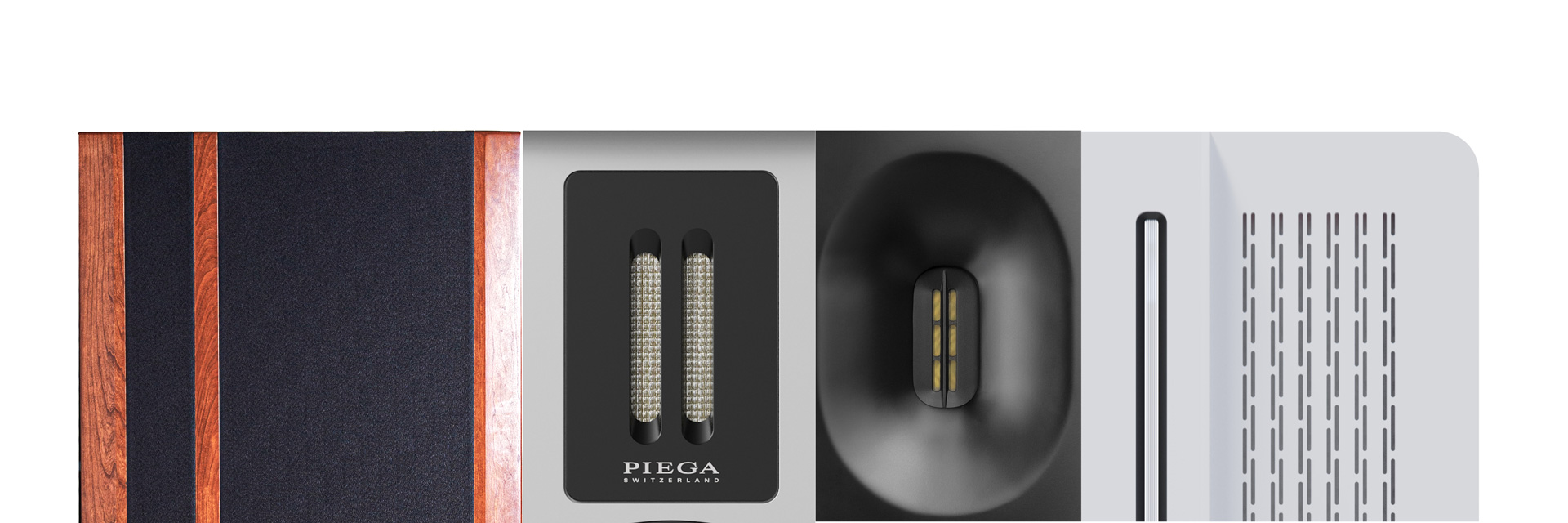While dynamic drivers dominate the market, there’s a lot to be said for planar drivers as well. We should note, however, that planar drivers are not all made equal. So, what exactly is a ribbon, for instance? What’s the difference between planar magnetic and electrostatic? And what can planars do that dynamics can’t – and vice versa?
Genius often lies in simplicity. In a dynamic driver, a magnet system moves a coil, which in turn moves a diaphragm, the motion of which causes the air pressure variations that we perceive as sound. This “chain reaction” begs the question whether the same thing couldn’t be achieved with fewer parts – and indeed, it can be done, for instance by combining the voicecoil and the diaphragm (and possibly also the suspension) in a single unit – as it’s done in planar drivers.
Three ways to get one general shape
The way you do this is by suspending an extremely thin membrane between two grids that control its movement – and there’s broadly speaking three ways of achieving this.
The oldest concept is the classical ribbon driver which first saw the light of day in 1924, making it exactly as old as the dynamic driver. In a ribbon driver, the membrane is a thin conductive foil that doubles as the voice coil. Aluminum is the material of choice here, as it offers an excellent combination of low mass and good conductivity. The ribbon is placed in the field of a powerful permanent magnet (the stator field) and is fed the music signal. The current flowing through the foil interacts with the stator field to form a Lorentz force that moves the foil, reproducing the waveform as sound. Ribbon drivers are expensive to make for two reasons: the stators require powerful magnets, and the high conductivity of the foil results in an extremely low impedance, requiring either specialized high-current amplifiers to drive them or transformers to raise the impedance to levels that normal amps can handle.
Expensive loudspeakers often use tweeters labeled as “ribbons”, but in reality, these are typically planar magnetic drivers. These follow the same basic principle, but use a plastic foil as a diaphragm that has a conductor applied to it, covering practically the entire area in a meandering pattern. This not only helps reduce the mass even further; the long, thin conductor naturally has a much higher resistance, resulting in an impedance that conventional amplifiers can easily deal with. This construction method yields yet another advantage: Since plastic has some elasticity, the right material choice allows it to act as its own suspension. Since magnetostatics are the only planar drivers that don’t require transformers or specialized amplification, they are by far the most common form of flat panel speakers.

The quest for the lowest possible moving mass will inevitably lead you to electrostatic drivers. These use a foil membrane that doesn’t have conductors on it, but instead is coated with slightly conductive material. Rather than between magnets, it is suspended between electrode grids. If you drive the foil with a music signal, electrostatic attraction will make it move back and forth between the grids. Electrostatic drivers are the antithesis to ribbons in that they have extremely high impedances, making either transformers necessary to step the voltage up to the required level to drive them, or specialized amplifiers that are in themselves capable of swinging extremely high voltages.
Why planar drivers?
Planar drivers offer a number of advantages when compared to their dynamic counterparts: since dynamic drivers use a voice coil to push and pull the diaphragm, they “grab” it at its center, meaning that the diaphragm movement is pistonic only at lower frequencies. Exceed a certain point, and the diaphragm will start to break up, creating uncontrolled sound sources all across its surface that all have their own ideas of sound which are unrelated to the actual music signal. In a planar driver, the diaphragm is either its own voice coil (ribbon, electrostatic) or the coil covers virtually the entire diaphragm area, meaning that the membrane is uniformly driven along all of its surface. This cannot fully prevent partial vibration, but it greatly reduces them and pushes them out to much higher frequencies.
Another benefit is an extremely low moving mass for a given area, reducing inertia as well as the capacity to store kinetic energy that might then be released out of time in an uncontrolled manner. In fact, planar drivers are so light in relation to their surface area the the air surrounding them acts on them like a damping liquid, resulting in very fast and clean decay. All these traits greatly benefit resolution.

Why not planar drivers?
The fact that planar drivers don’t dominate the market is due to the suitcase full of drawbacks that they tend to carry along. Most notably, planar drivers offer relatively low sensitivity for a given area, combined with limited excursion capability. Since the strength of the stator field decreases quadratically as the distance between it and the diaphragm increases, this distance needs to be as small as possible to achieve reasonable sensitivity, but that quite literally stands in the way of large excursions.
Decent sensitivity figure therefore call for large diaphragms, which means that planar drivers are naturally rather far removed from being considered point sources. As a result, planar speakers tend to exhibit pronounced directivity, requiring care during setup and making the speakers more sweet spot dependent. When used only as a tweeter, this can be elegantly exploited by using narrow but tall diaphragms to achieve a wide horizontal, but narrow vertical radiation pattern to cut down on floor and ceiling reflections. As the frequency range decreases, however, the required diaphragm area quickly becomes so large that beaming becomes inevitable both horizontally and vertically. What’s more, the back wave of large planar drivers cannot be sensibly contained using an enclosure, which is why virtually all flat panel speakers are dipoles. As you move even further down the frequency ladder into deep bass regions, the surface area requirement for meaningful output finally become wholly impractical. Many flat panel speakers therefore use an integrated dynamic subwoofer to achieve the desired bass authority. In the end, its once again all about priorities: If you value tremendous resolution and transparency, don’t mind putting more effort into the setup procedure and can live without the last bit of dynamic reserves, you should definitely give some planar speakers a listen.


